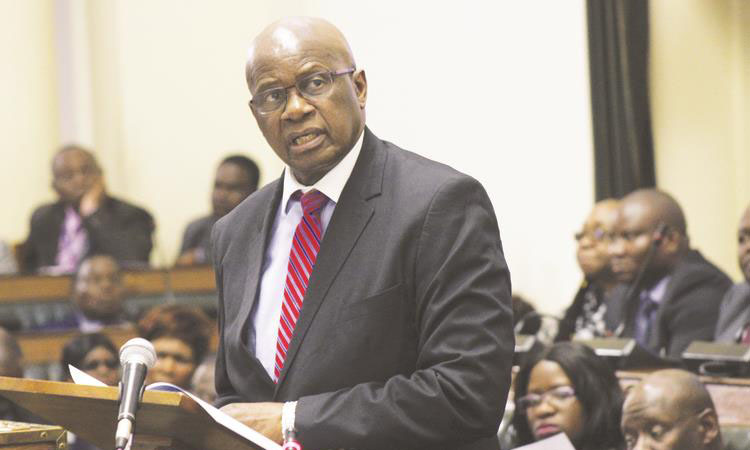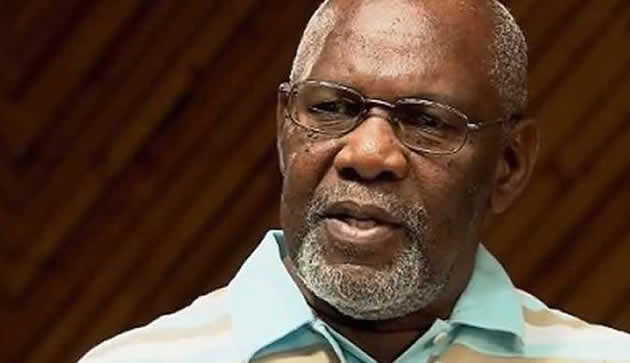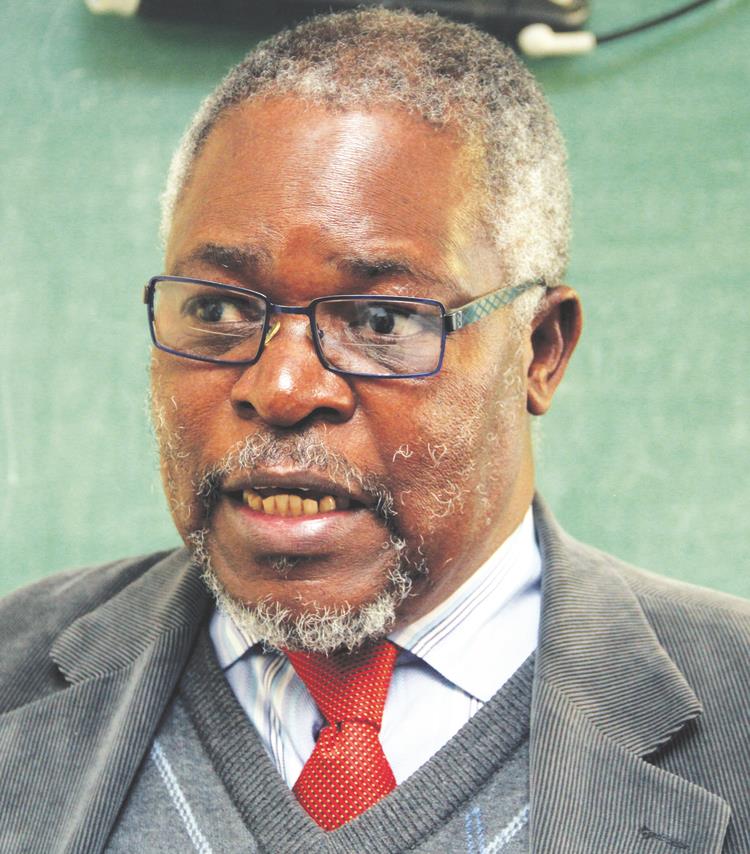3,7pc growth target achievable — Govt…Stellar agric performance, better metal prices cited


Finance and Economic Development Minister Patrick Chinamasa presents his 2016 National Budget Review and 2017 Outlook to Parliament yesterday
Business Reporter—
GOVERNMENT has reaffirmed its 3,7 percent economic growth target for this year despite constraints posed by limited fiscal space.Presenting his 2016 National Budget Review and 2017 Outlook to Parliament yesterday, Finance and Economic Development Minister Patrick Chinamasa said growth prospects were positive owing to the strong performance in agriculture and a modest rebound of global metal prices.
“These positive developments gave impetus to the rest of the other (economic) sectors, to give a projected growth of 3,7 percent this year,” Minister Chinamasa said.
He said the domestic economy grew by 0,7 percent last year. Minister Chinamasa revised growth prospects in March this year on account of expected stellar agricultural performance and a brighter outlook for minerals, having been weighed down by drought and subdued metal prices the previous year.
He had forecast growth at 2,7 percent earlier in his 2017 National Budget presented in December. The International Monetary Fund (IMF) says Zimbabwe’s economy will grow by 2 percent, while the World Bank sees growth at 2,3 percent.
The Bretton Woods institutions have had to review their growth forecasts for Zimbabwe this year, with IMF reviewing it up from minus 2,5 percent, while the World Bank had first projected in October last year that the economy will expand only by 1,5 percent.
Sectorally, Minister Chinamasa said positive results were already evident, with this year’s strong recovery of agriculture estimated to yield a commendable 21,6 percent growth.
The 2016-17 agriculture season saw stronger Government and private sector cooperation in supporting the sector under various cropping programmes, including the Special Maize Import Substitution Programme, popularly known as Command Agriculture.
Minister Chinamasa said starting with the 2017-18 agricultural season, Government extended the command farming concept to wheat, livestock, fisheries and wildlife, with an amount of $334 million having been budgeted.
This will be complemented by the Presidential Input Scheme valued at $153,1 million to cater for about 1,8 million rural households.
Under the Presidential Input Scheme, cotton will be supported to the tune of $60 million, catering for 400 000 households, with grain production taking up $52,9 million, and the balance supporting oilseed crops such as soya beans.
In terms of the mining sector and initiatives undertaken to improve production and viability in the sector, the sector is expected to grow by 5,1 percent in 2017.
Ongoing reforms in the diamonds and coal industry are already seeing the turnaround of these sub-sectors and providing impetus for higher growth in the sector.
Small scale miners will benefit from Government support through the SMEs Mining Loan Fund, as well as the recently launched $20 million SME Facility for artisanal miners.
With regards to gold production, Small Scale Miners, saw contribution increasing to reach 42,6 percent of total gold output in 2016, from 36,7 percent in 2016.
With the capitalisation of the Zimbabwe Mining Development Corporation to the tune of $80 million, diamond output during the first half of 2017 reached 1,1 million carats against 690 000 carats realised during the comparative period last year.
The manufacturing sector is on the mend and is estimated to have grown by 0,3 percent in 2016 compared to 0,2 percent recorded in the previous year comparatively.
The positive impact of Government interventions in support of domestic value addition contributed towards revival of the manufacturing sector. This included Statutory Instrument 64 of 2016, domestic financial system export incentive by the Reserve Bank, as well as supportive duty rebates on imported capital equipment.
Resultantly, weighted average capacity utilisation improved from 34,3 percent to 47,4 percent in 2016 in sub-sectors such as foodstuffs, textiles and ginning, clothing and footwear, non-metallic mineral products and metals and metal products.










Comments